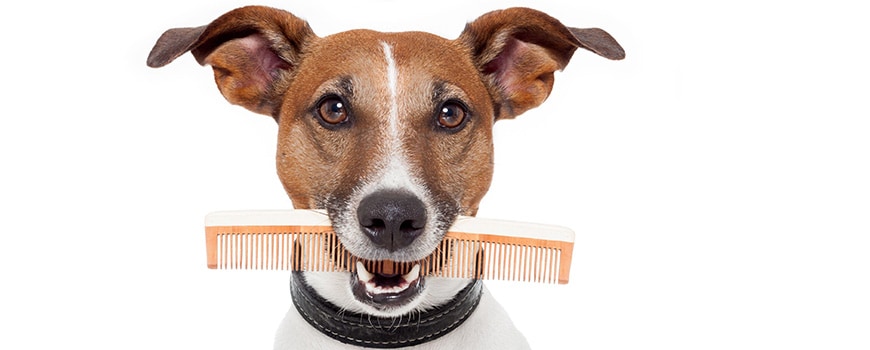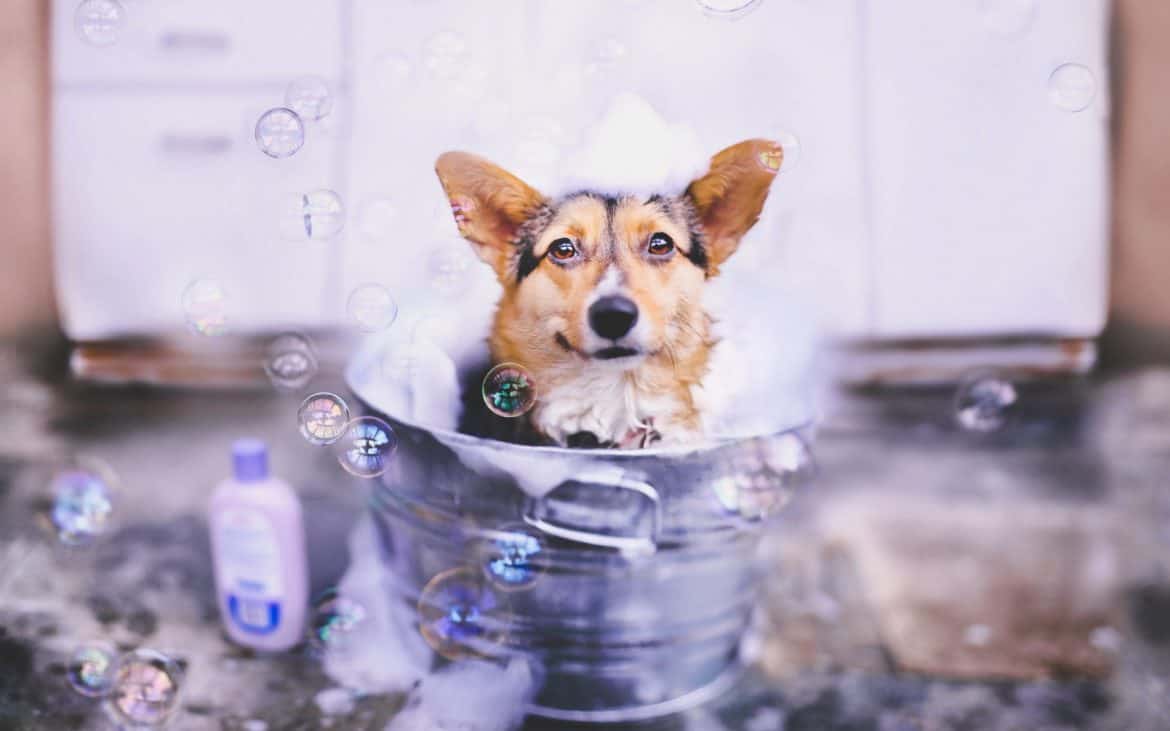Medicated shampoos cover a lot of area. There are many different skin problems that not just any medicated shampoo will help correct. Medicated shampoos should have a label indicating its use on different skin conditions. Seborrhea is the medical term for oily skin. If the label says for seborrhea, and your dog has oily skin, this may help.
Medicated shampoos can help, but are usually a temporary fix. However, they can give your pet relief from some of the itching. If your pet has allergies, a medicated shampoo may make your pet temporarily more comfortable, but it won’t reduce his allergies. You need to find out what your pet is allergic to before you can treat the problem.
Yeasty Skin
Yeasty skin is a problem groomers see often in such breeds as Cocker Spaniels. Often, the area between the toes has a pasty yellow discharge on it, indicative of yeast. Chlorhexidine is an ingredient that helps with yeasty skin. Chlorhexidine shampoo is left on the skin for five to ten minutes and rinsed off, removing the yeast and any flaky skin. Again, look at your pet’s diet. Diet plays a very important role in skin health.
Skin Infection
Pyoderma is the medical term for infected skin. There are shampoos with iodine in them to help treat pyoderma. Shampoos with benzoyl peroxide in them also help treat pyoderma and also flush out the hair follicles, effectively removing blackheads and excess oil, or sebum.
Tar-Sulfur Shampoo
Tar-sulfur shampoo is also effective for itchy, flaky skin. Denorex shampoo for humans uses a tar-sulfur base. Many vets will even advise using Denorex on your dog for certain skin conditions. However, never use tar-sulfur shampoos on a cat. Cats have extreme reactions to some chemicals and this is one of them.
Oatmeal Shampoo
Oatmeal is a product routinely used to help itching—people take oatmeal baths when they have a rash or poison ivy or chicken pox. Pets can also use an oatmeal shampoo to help soothe itchy skin.
If the label says soap-free and claims it won’t wash off your flea-control products, this is a mild shampoo, good for weekly bathing. If your dog is dirty, however, don’t expect it to get the dog clean. Normally, these shampoos are not for cleaning the dog as much as for soothing the skin.
There are numerous oatmeal formulas on the market: oatmeal and baking soda, oatmeal and aloe, and many medicated shampoos with oatmeal in them as well.
Degreasing Shampoo
For very dirty dogs, a degreasing shampoo is necessary to help strip the hair of the dirt and oil. These shampoos work well on dirty pets, but you shouldn’t use them on pets you bathe often because they can be very drying. This type of shampoo is also great if you have a double-coated breed and you need to remove excess undercoat.
Getting your dog squeaky clean removes the oil that holds in all that shedding undercoat. Always follow up with conditioner after using a degreasing shampoo.
And yes, you can use mousses, gels, and hairspray on your dog! Most people and groomers don’t, but if you want to get that Westie’s hair to stand up around his face like its supposed to or make that Poodle’s “flopknot” look like a topknot, sometimes you have to bring in a little help. Always shield the eyes whenever you are using any kind of spray near the face or head.
Shampoo with Conditioner
These shampoos save a step in conditioning the coat and generally work well for most normal types of skin and coat. You may find your pet needs a little extra conditioning that these shampoos can’t provide and you need to do that extra step. However, they are generally a good all-purpose shampoo.
Clarifying Shampoos
Clarifying shampoos are harsh. They strip the hair of oil and any products used on the dog, such as mousses, gels, or sprays to style the hair.
Other Types of Shampoos
There are many dog shampoos on the market. You have to read each bottle to determine what type of skin or condition it’s for, and if you are like most people, you will open up the bottle and take a whiff at the store to see if you like the way it smells. Your dog could care less, but hey, we have to live with them so you may want something that smells good!
It’s important to note any problems your dog has such as dry skin, flaky skin, greasy skin, or very dry hair. The type of shampoo or conditioner you use can aggravate his condition. The point of bathing your pet is to make his skin and hair clean, get rid of odors, and hopefully improve his skin issues. You don’t want to make it any worse.
It’s also important to note if your pet has any reactions to products after their use, such as itching and scratching or biting themselves. Some dogs are very sensitive to colognes and perfumes and to some ingredients. Be sure the itching isn’t due to shampoo residue. Always follow the directions on the bottle.
Don’t Overdo It
In addition, you shouldn’t have to use medicated shampoo every time you bathe the dog. If you overuse medicated shampoo—for instance you use a shampoo for seborrhea often—you will dry out the skin, causing the skin to make even more oil and exacerbating the problem.
Think of medicated shampoos the same as medication. Use it when necessary. If the problem is chronic, a trip to the vet for testing is essential, as well as a close examination of the pet’s diet to see if the ingredients in the food could be causing the problem or lack of proper levels of essential fatty acids and good quality protein.

